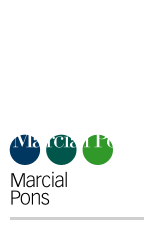A medieval herbal
a facsimile of british library Egerton MS 747
- ISBN: 9780712347891
- Editorial: British Library
- Fecha de la edición: 2003
- Lugar de la edición: London. Reino Unido
- Encuadernación: Cartoné
- Medidas: 37 cm
- Idiomas: Inglés

Servicio de búsqueda de libros
Este libro está agotado o descatalogado por la editorial. Si lo desea podemos buscar esta obra en librerías de saldo y ocasión.
Sí, por favor búsquenme este libroThe "Tractatus de herbis", reproduced here, is one of the many rare and precious manuscripts in the collections of the British Library. It is an illustrated herbal which comes from a collection of pharmacological texts written in southern Italy around AD 1300AD, which is now known as British Library Egerton MS 747. This herbal is particularly significant as it is the first surviving, and probably the original, manuscript of the "Tractatus de herbis", a type of herbal which was to become one of the most influential texts on medicinal plants between the 14th and 16th centuries. It contains a vast corpus of information about plants and their medicinal uses, inherited from Greek, Roman and Arabic sources, and combines this with paintings of plants which, in their observation of nature, anticipate for the first time modern botanical illustration. This "Tractatus de herbis" is also of interest because, for the first time since Antiquity, the artist actually looked at the plants and drew them from life wherever possible. The paintings may seem rather stiff and two dimensional to us today, but at the time they were amazingly innovative. Even in panel and wall paintings there is nothing comparable. The manuscript is something of an enigma as it is not dated and its place of origin is not recorded, there is no trace of who the owners were and no contemporary documents mention it. However close examination of its physical characteristics (size, binding, quality of parchment) and contents (layout, style of writing, illumination) suggest it closely resembles a number of manuscripts made in southern Italy around Palermo and Naples, and illustrated by the artist Jacobellus of Salerno.
Introduction by Minta Collins; List of plants by Sandra Raphael






